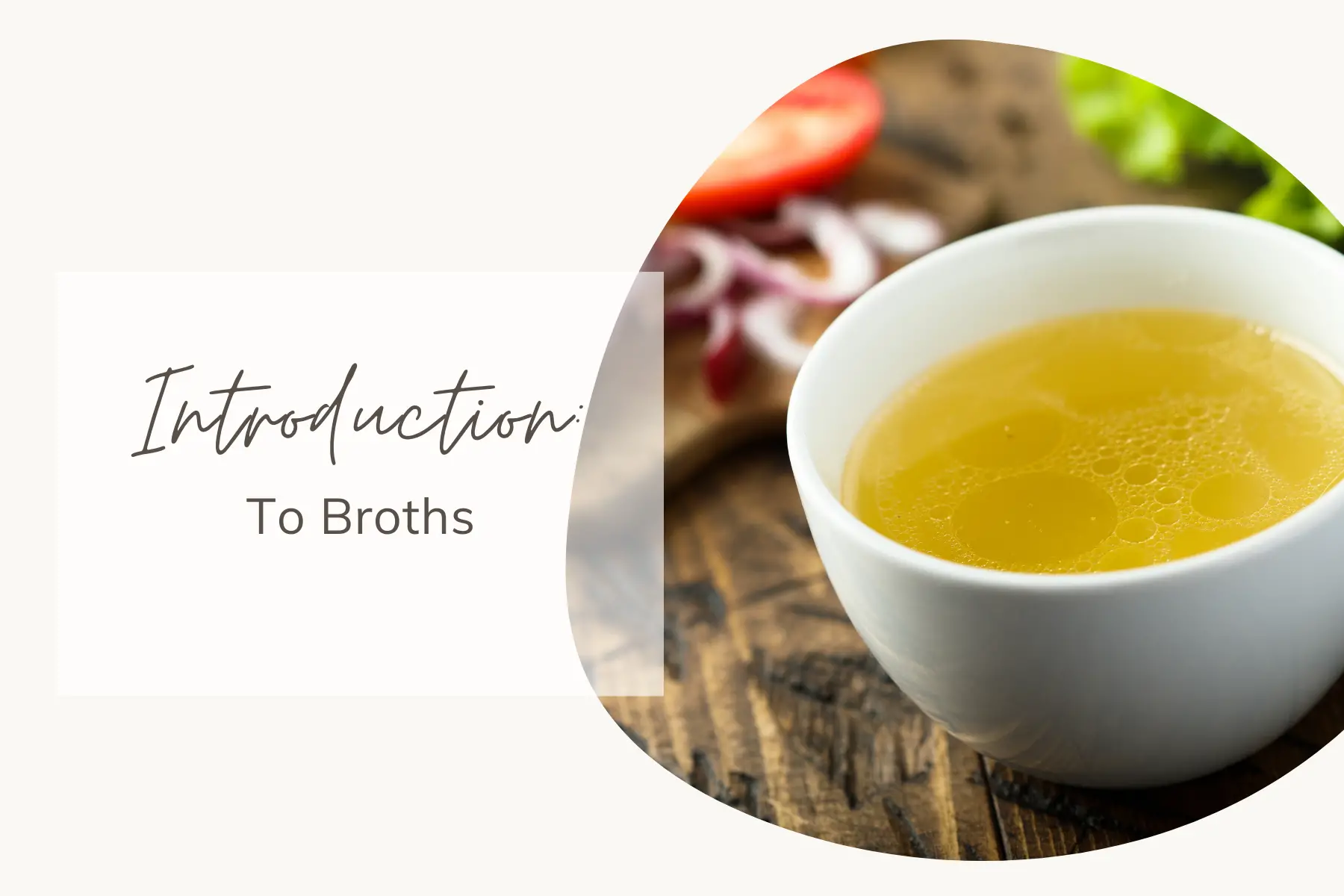Last Updated on March 25, 2024 by Share My Kitchen
Good broths, like liquid gold, are the foundation of great cooking. They are the ideal base for delicious stews and soups. You can also add some chopped fresh herbs and minced cloves to the pot, and enjoy it as it is to support and improve the immune system, especially in winter.
These broths can also save money since you won’t be wasting food. This is a great way to make use of any leftover bones or vegetable scraps. So, instead of throwing away your chicken carcasses, carrot peelings, and onion skins, you can toss them in a large pot.
Then, cover the scraps with enough water, and bring to a simmer over low heat. In no time you will have delicious broth. It’s possible to make large batches over the weekend, and then put it in the freezer to pull out when you need it. It’s as easy as that.
What’s in a broth?
Most broth recipes require water, meat or bones, vegetables, and herbs like bay leaves or thyme. Then, some acidic ingredient, like apple cider vinegar or wine to balance the flavor of broth.
The acidity of vinegar and wine also help to dissolve the connective tissue in meat and bones. Your homemade broth will therefore be richer in gelatin and amino acids. This also means that your homemade broth will have better nutrition, and a beautiful, silky texture.
A lot of broth recipes are made from meat. You can use whole chickens (including the meat), or meaty pork or beef shanks. These meat-based dishes are simple to prepare, and require only to simmer for an hour or two to produce good results.
Bones to Make Broths
Bones are the base of bone broth. Depending on the recipe, you might need to find leftover chicken bones, chicken feet, beef, or pork bones. Recipes based on bone need to be simmered for a long time, sometimes several hours.
Vegetables in Broths
You can use fresh vegetables to make vegetable stock, or to add flavor to bone and meat broths. For a traditional vegetable stock, you will only need to simmer the vegetables for less than an hour.
It is quick and simple to prepare. A lot of vegetables are perfect for these recipes. You can use a variety of aromatic vegetables, like fresh ginger, garlic, onions, fennel, and leeks to get the flavor you desire.
Savory Seasonings for Broths
A spoonful of miso paste and shiitake mushrooms add a lot of savory flavor to vegetarian versions. It’s also a good idea to add lots of greens right at the end of cooking for extra nutrition and amazing flavor.
Vinegar and wine are naturally acidic. Their acidity add a vital punch of brightness to a lot of recipes.
Herbs and Spices
Also, fresh herbs add flavor to food. To preserve their flavor, you should add them to your stockpot at the end since a lot of herbs are tender and easily damaged when cooked for long. Because they can withstand long cooking, you can add tough herbs, like fresh rosemary or a bay leaf or two, to your stockpot sooner.
Sea salt enhances flavor. You can add it at the end of cooking, just before serving. If you add it too soon, the broth will become too salty when the liquid in the pot evaporates.
How to Make It
Most broth recipes are simple to make. Start with plenty of cold water. Next, add the ingredients to a large stockpot, and bring to a simmer over medium-high heat.
Then, you need to turn down the heat, and allow it to cook for between 30 minutes and several hours depending upon the recipe. You also need to follow some basic steps. You can make it on the stovetop, but you can also use an instant pot or slow cooker if that’s what you prefer.
Roasting the Ingredients First to Make Broths
Blanch or roast your meat and bones. The flavor of most broth recipes can be improved through roasting or blanching the meat and bones.
Place all the ingredients in a large pot, and cover them with cold water. Then, bring the contents to a boil, and reduce the heat to a low simmer. The recipe will specify how long to simmer the ingredients.
If you are using herbs or greens, add them at the end of cooking. This is particularly important for herbs with delicate leaves, such as parsley and basil.
Strain the liquid using a fine-mesh sieve and into mason jars. It will keep up to 6 months in the freezer, or 5 days in the refrigerator.
Recipes
These broth recipes are easy and simple to follow. They include different meat and bone broths, and herb-centric broths that use medicinal mushrooms and other anti-inflammatory herbs.
- Chicken Broth
- Turkey Bone Broth
- Medicinal Mushroom Broth
- Bone Broth
- Mineral-rich Sipping Broth
- Home Bouillon
- Slow Cooker Bone Broth
- Chicken Foot Stock
- Beef Bone Broth


